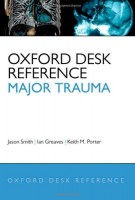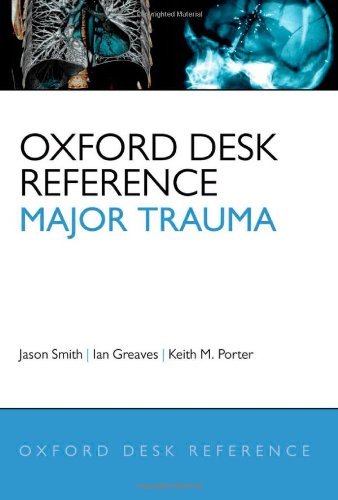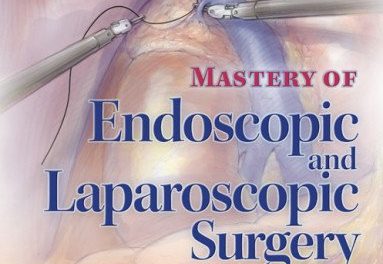 Authors: Jason Smith, Ian Greaves and Keith M. Porter
Authors: Jason Smith, Ian Greaves and Keith M. Porter
Publisher: Oxford University Press
Book Review by: Nano Khilnani
This 581-page reference work on major trauma provides general guidance and specific advice by trauma specialists (who have countless years of highly valuable practical experience handling many types of trauma cases) that the beginning or intermediate physician in emergency medicine needs, to do his or her job better.
This book in short, provides the ‘missing ink between basic trauma management and advanced specialist care’ as described in its description provided by the publisher. It fills the need for evidence-based guidance and direction on the proper course of action for physicians and surgeons to take in different types of trauma cases. Put together here in this single source of reference is that life-saving information.
Major work in compiling and weaving together the materials of this book’s 46 contributors around the world was done by three senior trauma physicians and surgeons: Jason Smith, Ian Greaves and Keith M. Porter. Their positions and designations are provided at the end of this book review.
There is a simple listing of the 33 chapters in this book, followed by a detailed table of contents with subtopics in each chapter. At the end of most chapters is a summary or conclusion. A list of materials for further reading at the end of each chapter is always provided, to help you expand your knowledge of specific topics in each chapter.
This is a very useful book that covers numerous types of trauma and injuries to the body’s limbs, its internal organs and its ‘operating’ systems.
It also covers the processes that doctors go through in providing care to trauma patients, from initial assessment, to stabilization, to surgical procedures and other options.
Some of the bodily injuries for example, covered in the 33 chapters are: abdominal injuries, burn injuries, chest injuries, crush injuries, eye injuries, facial injuries, head injuries, limb injuries, pelvic injuries, spinal injuries and torso injuries. Information is provided also on how to handle injuries caused by blasts and ballistics, biological and chemical weapons, and exposure to radiation.
Also covered in other chapters of this extensive book are many of the traumas that effect critical body functions caused by accidents. There is information on: abdominal trauma, bariatric trauma, eye trauma, maxillofacial trauma, pediatric trauma and trauma in pregnancy.
The chapters instruct the doctor, reader or student, as the case may be, on what to do, in specific emergency situations, such as airway management, assessment of breathing capability, circulatory assessment, and radiological assessment.
Matters such as critical care during, or rehabilitation after trauma are discussed. The psychological aspects of trauma are explored. A chapter on research in trauma is also available, with scoring systems, and a trauma outcome evaluation.
A large list of helpful abbreviations is also provided at the beginning of this book. As you know, abbreviations help speed up communication in situations under time-pressure. Do you know for example, what APACHE stands for? It is Acute Physiology and Chronic Health Evaluation.
An eye-opening chapter is the very first one entitled The Trauma Epidemic. The statistics provided in it are sobering. Injuries kill five million people each year, which equates to nine percent of all deaths. There are many more people left disabled, for every death. Expect a rise in injuries in the next 20 years, unless something is done to mitigate that increase.
Around the globe, twice as many males as females are killed through injuries, with the highest rates in Africa and Europe. And younger people – between the ages of 15 and 44 – account for half of global mortality due to trauma, this chapter informs us.
A rise in road traffic collisions around the world is expected to cause deaths from accidents to rise from its current ninth position to the fifth leading cause of global deaths by 2030, which would be 3.6 percent of deaths worldwide. What is that in numbers? A whopping 1.2 million people to be killed in traffic accidents
This book, to say the least, is an immense contribution to the effort of saving the lives trauma patients in hospitals and other health care centers worldwide. Preventive actions on a large-scale basis by governments would contribute to probably tens (or hundreds) of thousands more lives saved.
Jason Smith is a Consultant in Emergency Medicine at Derriford Hospital in Plymouth in England.
Ian Greaves is Consultant and Professor of Emergency Medicine at James Cook University Hospital in Middlesbrough in England.
Keith M. Porter is a Consultant Trauma Surgeon at the University of Birmingham NHS Trust in Birmingham and Professor of Clinical Traumatology there.







